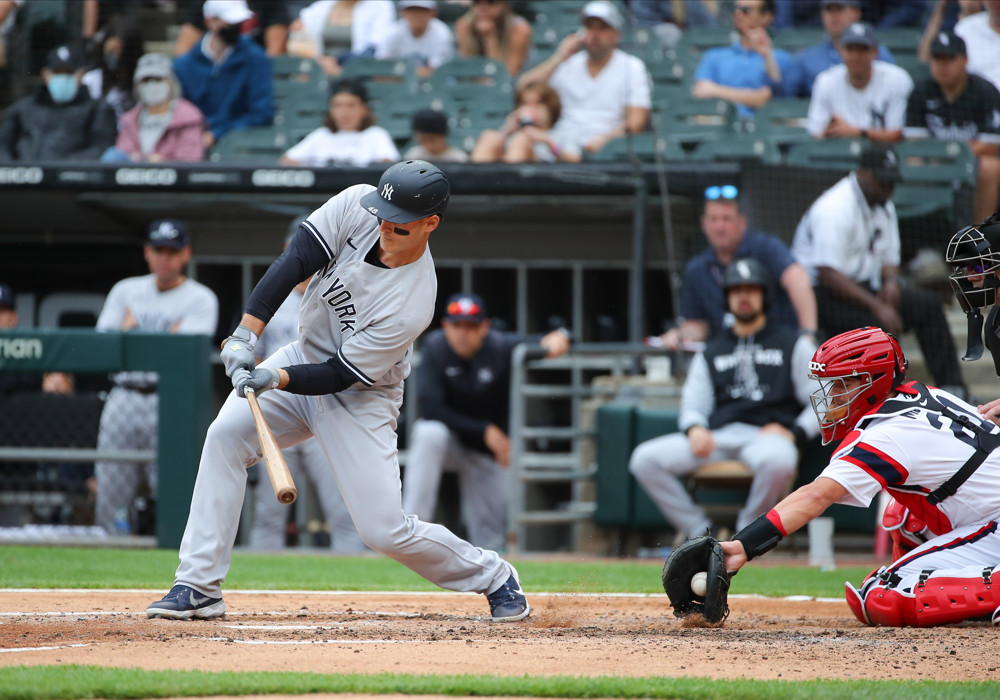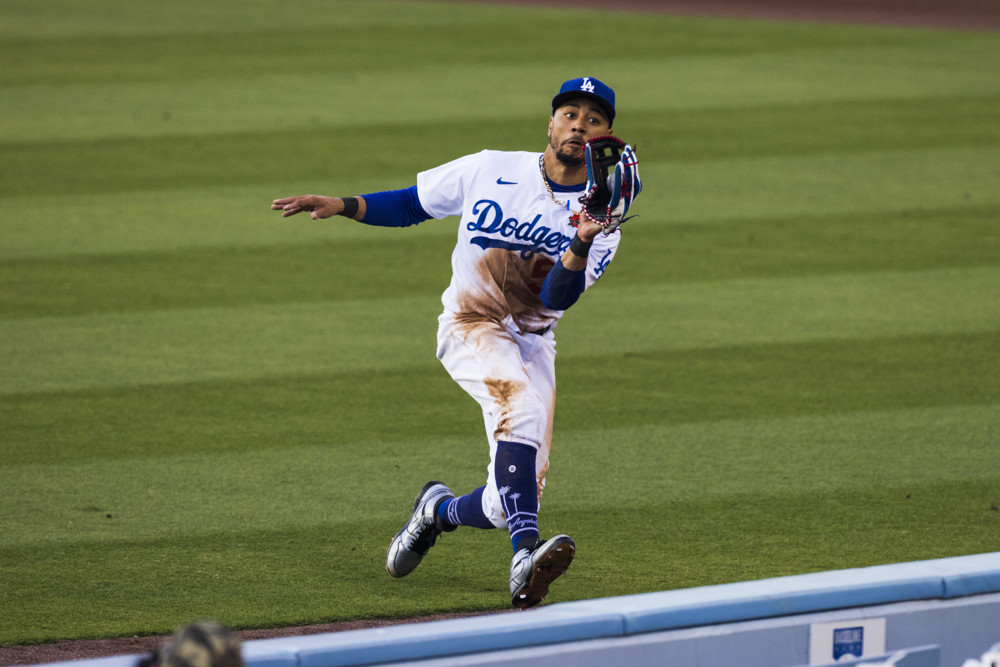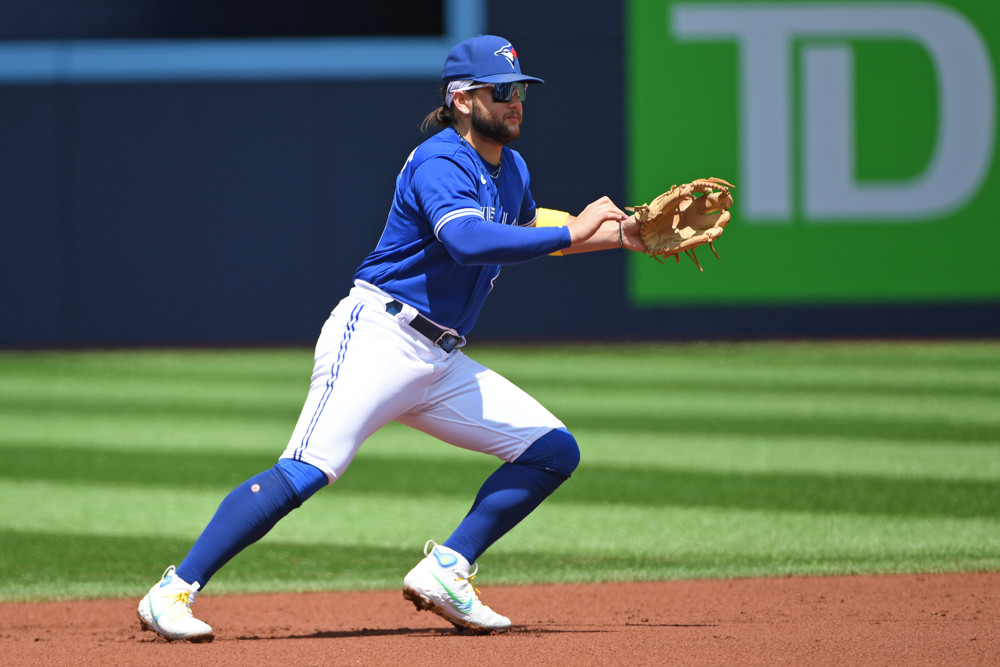Compiled by Mark Simon
Who’s the best defensive player you’ve ever seen?
Think about that one for a little bit. It’s thought-provoking and requires considering a lot of factors. But it’s a fun subject.
We posed the question to as many “baseball people” as we could find. These included former players, broadcasters, journalists, and a few others who work in our industry. We got more than two dozen responses. The respondents ranged in age from 20s to 70s so the baseball-watching inventory varied. Some names come up more than once and deservedly so. Some names will surprise you. These are their answers — if you click on any player’s name, you’ll get a link to video highlights of that player.
Sean Forman, owner, Sports-Reference.com
“I’ll go with Andruw Jones. Everything looked easy when he was going for balls. I believe the eye test is terrible for assuming the flashy play was the difficult play. When a ball is hit and I think to myself, ‘Oh, that’s going to be a problem,’ and then the defender fields it easily, that’s an indicator that the player is a great defender.”
Mike Krukow, former MLB pitcher, current analyst for Giants TV broadcasts
“Barry Bonds did things I never saw anyone do. He never got the accolades for being the player he was. One of the most incredible first steps on the defensive end.
In 1993, the Giants had John Burkett and Bill Swift, two sinkerball pitchers. There were times I’d see Bonds standing 15 feet from the left field line when a left-handed hitter came up. You could have parked eight semis length-wise in the space between him and the center fielder, Darren Lewis. And he never got burned on a ball in the gap.
Day-in and day-out, guy would slice fly balls to him. He always said ‘If he tries to hit it to the gap, I alter his swing. And if I alter his swing (by playing where he played) I did something important.’”
Marty Lurie, KNBR talk-show host, San Francisco
“Hall-of-Famer Luis Aparicio was the first major league player I saw up close in spring training in Miami in the mid-1960’s. I watched him take infield and to my amazement his hands never moved once he was in position to field a ground ball. The glove was steady. It was so quiet, I couldn’t believe it. That’s when I realized how good a fielder a top flight major league shortstop was. Poetry, quiet glove and hands, completely in control of the ball.”
Trevor Plouffe, former MLB third baseman, current MLB broadcaster, various sources
“Matt Chapman and Kevin Kiermaier are damn close. Chapman is so strong and quick laterally. His arm is out of this world. His pre-pitch setup is so low that you would think he would be limited in his first step but he isn’t. KK has closing speed. So many balls were hit that I thought he had no chance on. And he would get there. And his ability to work the wall is incredible.”
Manny Acta, Mariners bench coach
“Adrián Beltré. His reflexes, agility, hands and arm strength were just unbelievable. He even made bunters doubt themselves, because he was so good coming in, it was sick. I am also a big Rolen and Tony Fernández fan. I always prefer an infielder over an outfielder. It’s always tougher to catch a ground ball. There no bad hops in the air.”
Gary Cohen, Mets TV play-by-play announcer
“Oh my, Mark! You’re asking me to pick one? For short periods of time, Rey Ordoñez and Juan Lagares were state of the art at their positions.
But for the duration of his career, Keith Hernandez was the best defender I have ever seen. He re-defined the position, in terms of his range, his fearlessness, but also the command he took of the entire infield (and occasionally the battery), from a position that rarely exudes that kind of on-field leadership.”
John Thorn, official historian of MLB
“To the eye, Cal Ripken, Jr. was not an impressive shortstop. But his numbers in 1983-1984 were astounding, indicating that much of defense consisted of positioning before the pitch–that brains were as important as reflexes. Rey Ordoñez looked better than Ripken, and as a Mets fan I saw him more often. But he wasn’t.
You asked who was the best defensive player I ever saw, and I must preface my answer by saying that watching in two dimensions–on a tv screen–is not the same as seeing in three. Live, it was Ozzie Smith, but at the ballpark it was Jim Edmonds.”
Vince Cotroneo, Athletics radio play-by-play announcer
“The best defensive player I saw in the minors was Roberto Alomar, at Double-A Wichita with the Padres in 1987, playing shortstop. Unbelievable range and an absolute magician, from a quality family.
But ultimately for me, and I know it’s a small sample, Matt Chapman stands alone. Because he has revolutionized the positioning at third, playing so deep with his incredible arm and quick feet. Watching him take bunts away from Dee Gordon has been a sight to behold.
In St. Louis, Matt Carpenter attempted to bunt to start the game. Matt was alone on the left side in the shift. He charged, grabbed, and beat Carpenter by a full stride to first. To me, it epitomized the one reason for interleague play. The chance to see a player perform at the highest level that you wouldn’t ordinarily get to watch based on schedule.”
Adam Amin, ESPN Radio play-by-play announcer
“The fluidity of Nolan Arenado’s glove work and the angles he moves at, to get to balls others don’t, makes me feel he’s the best infielder I’ve ever seen.”
Len Kasper, Cubs TV play-by-play announcer
“It’s probably Nolan Arenado. He makes all the plays and has more range than any third baseman I’ve ever seen. He also has maybe the best left-side infield arm I can remember. Javier Baez is 1A for me and I’m lucky I get to watch him every single day. Jason Heyward is the other one. Never ever makes a bad decision in the outfield.”
Preston Wilson, former MLB player, current TV broadcaster
“Rey Ordoñez was great because there was no play he didn’t think he could make and he was one of the first guys I saw to make off-platform throws look easy. The other would be Ozzie Smith. He always knew where he was in relation to everything on the field. When I saw him take ground balls and throw to bases without looking, I was blown away. And it makes total sense because the bases never move, but to see somebody do that with supreme confidence and accuracy is something that you never forget. He might actually be a wizard.
Derrek Lee was just as good if not better than Keith Hernandez. And I have a good one for you. The best catcher I ever saw was my uncle Collis. The best outfielder was my Uncle Stevie. Collis was the first catcher I ever saw to throw from his knees. He had a cannon!”
Jim Duquette, former MLB general manager, current XM MLB radio show host
“Andruw Jones – no one was better at playing shallow CF, and positioned as well and covered as much ground, and knew where the ball was going before anyone else, than Jones. He did it so gracefully, that most of the time it didn’t look like he gave the effort.
It used to drive me crazy, the ball is headed to the gap and there he is, with his glove open two seconds longer than anyone else, like he’s catching it in his back pocket.”
Gar Ryness, aka “Batting Stance Guy”
“Maybe someone in NBA was stronger than Karl Malone but I just assumed he was strongest because of how everyone discussed his strength. Maybe there was a better fielder than Ozzie Smith but my own eyes and everyone else convinced me he was the best fielder.”
Dave Wills, Rays radio play-by-play broadcaster
“I was working for the White Sox when Omar Vizquel and Roberto Alomar were working their magic and I’m not sure I’ve seen a better defensive shortstop than Vizquel. But I probably have to stick with the home team and go with Kevin Kiermaier. His jumps on gappers are as good as I’ve ever seen. His routes are also very efficient and on many occasions, he is actually pulling up on balls that most people would have to dive for. He can come in and go back on baseballs very well and has an above-average arm too. He also works at his craft to stay at the top of the defensive charts.”
Ron Darling, former MLB pitcher, current Mets TV analyst
“Keith Hernandez and Don Mattingly in the majors. But in the minors, it was Tom O’Malley. It was the first series I ever saw as a professional. Straight out of Yale. He was the best player offensively and defensively on the field. One diving play after another. He was 19.”
Note: O’Malley went on to play nine major league seasons for six teams from 1982 to 1990.
C.J. Nitkowski, former MLB pitcher, current Rangers TV analyst
“Kimera Bartee (who played for the Tigers, Reds, and Rockies from 1996 to 2001). KB had as quick of a first step as anyone who I had ever seen or ever played with. Combine that with his great speed and ability to anticipate and you’ve created the perfect formula for a center fielder with as good as range as you will ever see.”
Jim Bowden, former MLB general manager, current XM radio host, writer for The Athletic
“Andruw Jones was the best defensive center fielder I ever saw. He took away the singles in front of him and had above-average range to all directions. I’ve never seen another center fielder get to baseballs, let alone catch them like he was able to. He was instrumental in helping get his starting pitchers to the Hall of Fame.”
Adnan Virk, studio host, DAZN, MLB Network, NHL Network
“Roberto Alomar was magical at second base. He had a flair for the dramatic and the spectacular.”
John Dewan, owner, Sports Info Solutions
“Ozzie Guillen, who joined the White Sox the year that we started STATS Inc. He was such a character, just a hot dog on the field. But his defensive ability was something to behold. And I always thought, ‘if we could properly measure defensive analytics, we can find out how good he is and how good other defensive players are.’”
Aaron Goldsmith, Mariners radio play-by-play broadcaster
“I feel like this may be too easy of an answer, but the first name that comes to mind is Matt Chapman. I obviously see him a lot and he makes EVERY play. Coming in on a Dee Gordon bunt, over the shoulder catch in shallow left near the line, long throw from foul ground near third…dude does it ALL. I also measure it based on the fact that if he DOESN’T make the play, I’m literally shocked.”
Tom Walter, head baseball coach, Wake Forest University
“Stuart Fairchild, our starting CF, (2015-2017) won a Gold Glove in 2017 and was the 38th overall pick by the Cincinnati Reds. Stu made one of the greatest catches I have ever seen at any level in the ACC tournament in 2016. You can watch it here.”
Karl Ravech, host, Baseball Tonight on ESPN
“I’ll stick my nose out for a lunch-pail grinder named Dustin Pedroia. A four-time Gold Glover who made the play up the middle as well as anyone. He killed rallies while diving left and right. Flipped with his glove, threw sidearm. He did whatever it took to prevent a hit and I want him on every team of mine.”
Bill Parker, co-host “This Week in Baseball History” podcast
Boring answer, but it’s definitely Ozzie Smith, and what impressed me most was how quickly the ball could go from entering his glove to leaving his throwing hand. It seems to defy physics, but he could jump to catch a high bounce or line drive and have sent it on its way to first before his feet hit the ground again.”
Mike Bates, co-host “This Week in Baseball History” podcast
“I believe very strongly that Ozzie Smith is the best defender, relative to his peers, I have ever seen. Part of it, obviously, was his ability to make so many spectacular plays. He simply seemed to be everywhere. He was well positioned and had incredible range, and he just got to far more balls than anyone else. But even beyond that was his ability to make plays well, even routine ones.
And, as much as we (mostly) rightfully denigrate fielding percentage as a statistic today as a way to measure defensive performance, here, his eight times leading the NL in it, in tandem with his overwhelming number of chances, reinforce his greatness. He was just so natural-looking out there, so smooth. Like he had been born to play shortstop. His instincts were unfailing and he had such creativity to add to his overall steadiness.
Now, I’ll be the first to admit that he was helped by all the turf, and that he likely does not measure up to today’s shortstops athletically 40+ years after his debut. The only reason I would hesitate to choose him is that so much of his prime took place before I was an avid fan. But even after that, I remember being in awe.”
Joe Block, Pirates radio play-by-play broadcaster
“I suppose Omar Vizquel comes to mind because of his lightning quick hands and flawless footwork. What makes the greats great IMO is that they make the difficult plays look routine and Omar did that … routinely.”
Jim Morris, former MLB pitcher (movie, “The Rookie” is based on his life)
“Omar Vizquel, because he was defensively immaculate and looked like he was having fun playing.”
Chris Singleton, former MLB outfielder, current MLB radio broadcaster, ESPN Radio
“Roberto Alomar because he made great plays look so easy.”
Kevin Connors, ESPN SportsCenter anchor
“This will not be an original answer. But for a child of the 70’s, who grew up in the 80’s & has covered baseball professionally since the 90’s, there’s but one answer. Ken Griffey Jr. was spectacular. Don Mattingly exquisite. Omar Vizquel was captivating. But Ozzie Smith was extraordinary. Foolproof fundamentally with a flair for the magical. He was a showman, an illusionist, a wizard…and remains one of baseball’s great ambassadors. Thirteen consecutive Gold Gloves at arguably the most difficult position on the diamond — and yet that only begins to tell the story of Ozzie Smith.”



